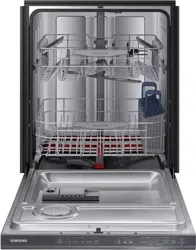
imagine the possibilities
Thank you for purchasing this Samsung product.
DW80H99* Series
DW80J99* Series
DW80J75* Series
Dishwasher
installation guide
These installation instructions are intended
for use by qualifi ed installers.
If you are having problems installing this dishwasher
Please call : 1-800-SAMSUNG (726-7864)
for assistance : www.samsung.com
STOP
DW80H9950US-00151A-06_EN_150216.indd 1
DD68-00151B-04
Loading ...
Loading ...
Loading ...
